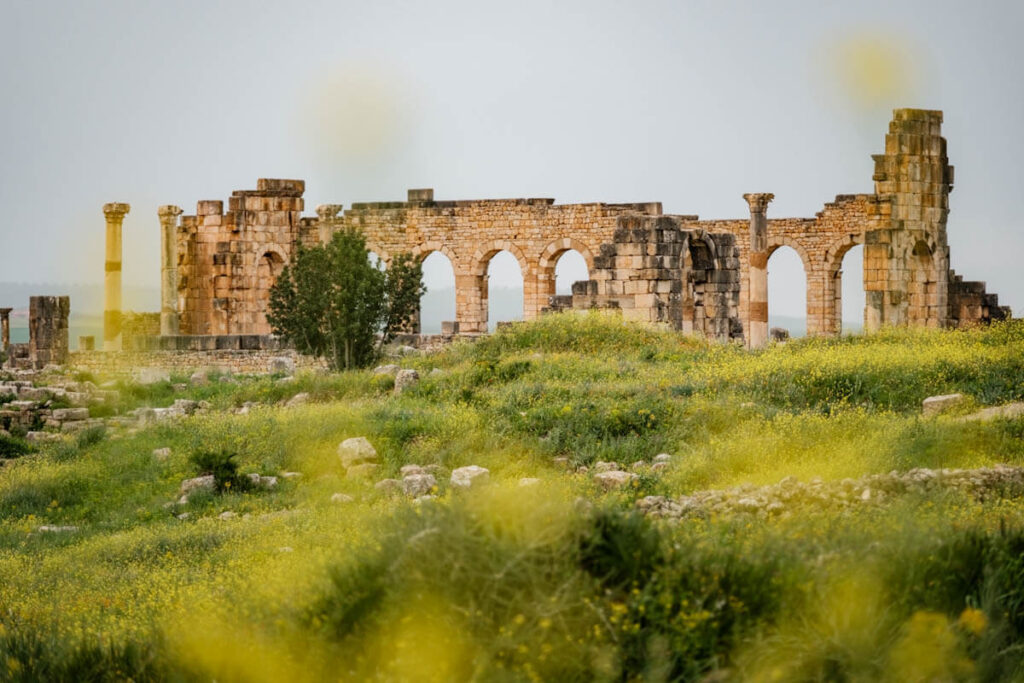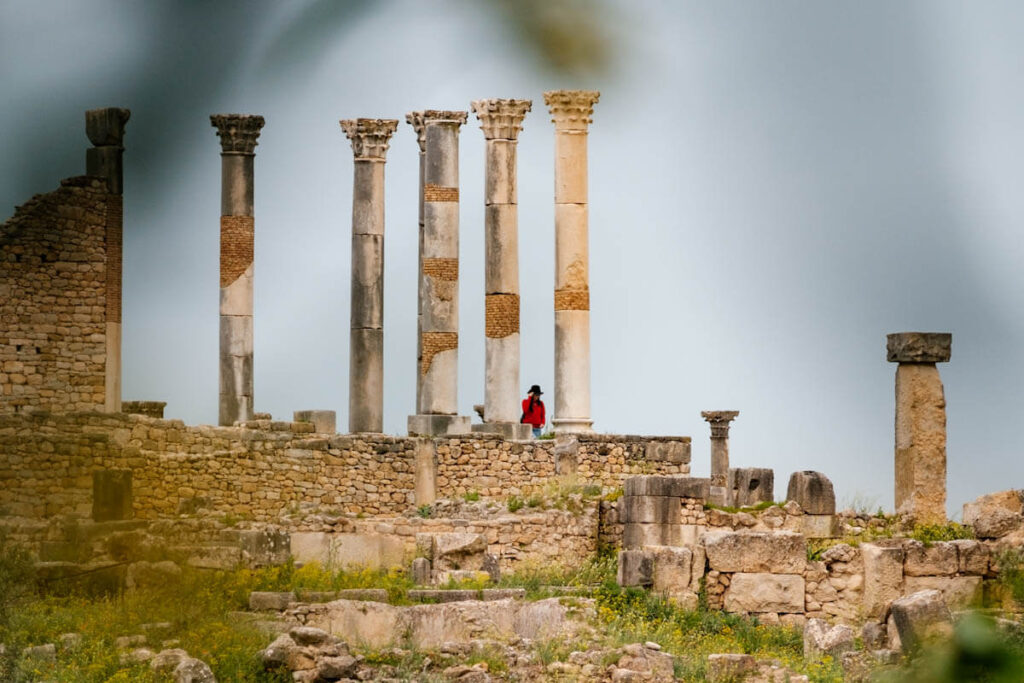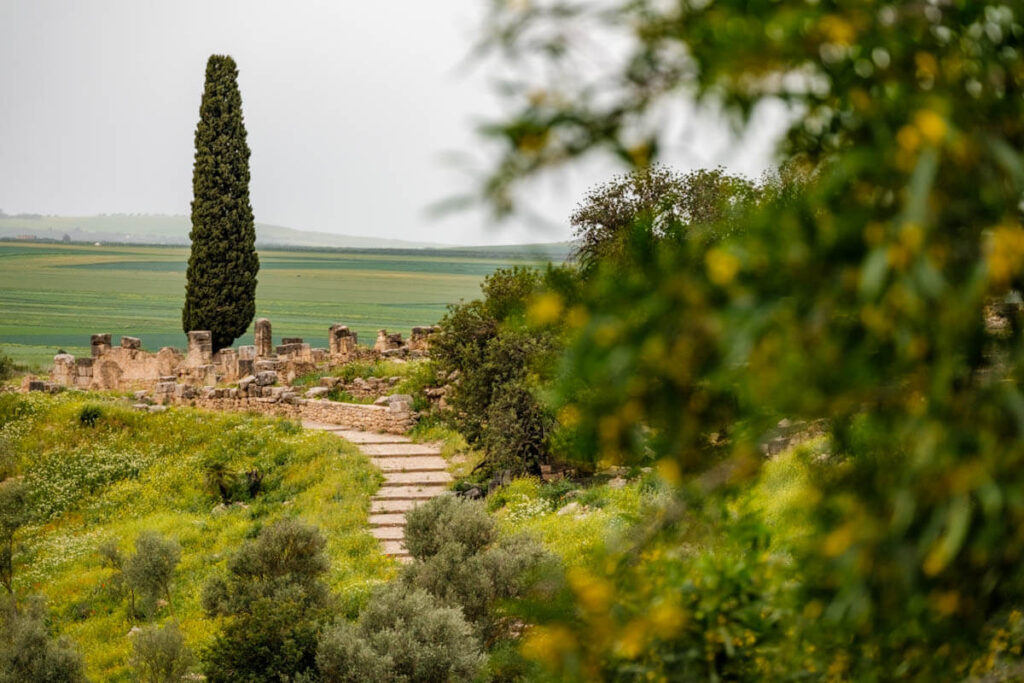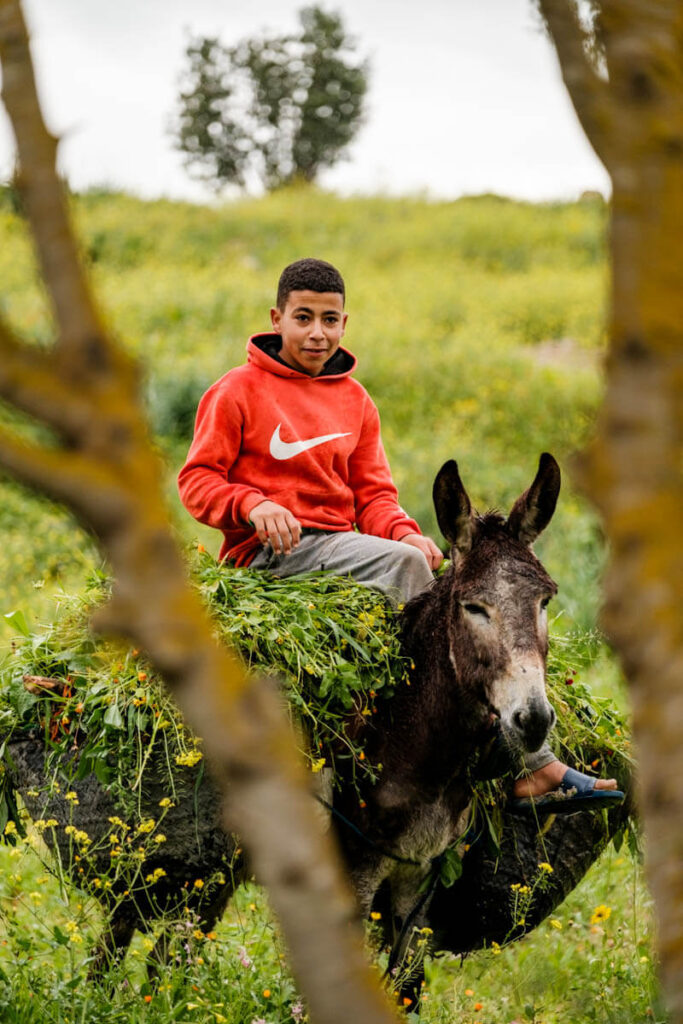During my visits to Carthage and El Djem in Tunisia, I’d already seen how far the Roman Empire stretched into the northern part of the African continent. While traveling through northern Morocco, I also stop at an ancient Roman settlement: Volubilis. Unfortunately, rain puts a bit of a damper on my visit and I have to leave earlier than planned. Still, Volubilis makes a lasting impression and I’d love to share a few thoughts about this remarkable site, which was added to the UNESCO World Heritage list in 1997.

The origins of Volubilis
It’s believed that Volubilis was founded in the 3rd century BC. During Roman times, the city grew into a major urban center and became the most important Roman trading post on the African continent. Many African goods made their way to Europe via Volubilis—think grains, olives and spices. But the trade didn’t stop at products: wild animals like lions and leopards were also bought here by the Romans, destined for combat in arenas across the empire.

Volubilis after the Roman Era
Even after the fall of the Roman Empire, Volubilis remained inhabited—right up until the 18th century. Around that time, building materials were in high demand for the construction of Moulay Ismail’s palaces in nearby Meknes. The people of Volubilis gradually left, and many of the city’s buildings were dismantled to provide stone and other materials for Meknes.
Then came the devastating earthquake of 1755, the same one that destroyed much of Lisbon. It also damaged most of what was left standing in Volubilis. Remarkably, despite all this destruction, 30 Roman mosaics have survived in their original locations and can still be admired today. It’s wild to think that, had Volubilis not been stripped for palace construction, it might now be one of the best-preserved Roman settlements in the world.

Visiting Volubilis
You might be thinking, “Hmm… just a bunch of ruins.” And you’re not wrong! But still, it’s a fantastic place to walk around and imagine what this city must have looked like in its prime. The layout of the remains helps you picture the original structures quite vividly. A fair number of ruins are still clearly visible, with upright columns and beautifully crafted stone arches. The triumphal arch in particular is in great shape.
I was genuinely disappointed when the weather suddenly turned, bringing heavy rain that cut my visit short. Such a shame! If I return to Morocco someday, I’ll definitely come back to explore this archaeological site properly. And while I’m at it, I’ll make sure to visit the nearby town of Moulay Idriss too!
Volubilis is open daily from 8:30 AM until about an hour before sunset. Entry costs 70 Dirhams. On-site, you can also hire a local guide—just be sure to agree on the price and what’s included before setting off.

